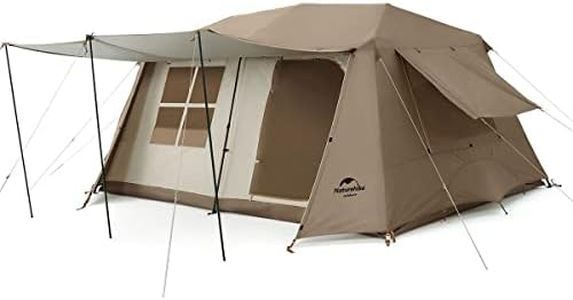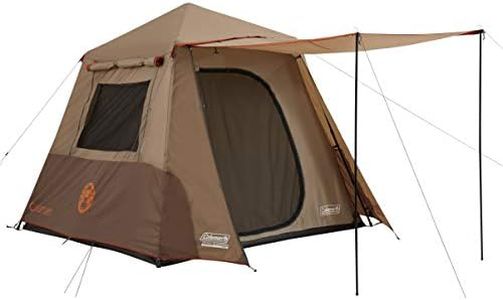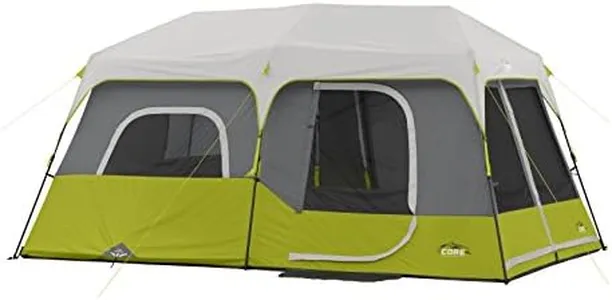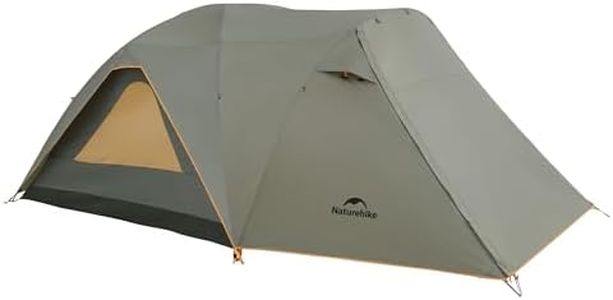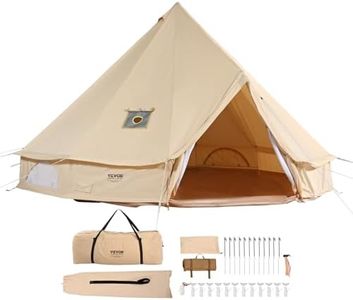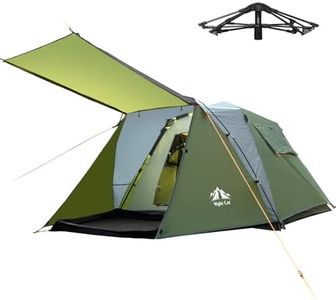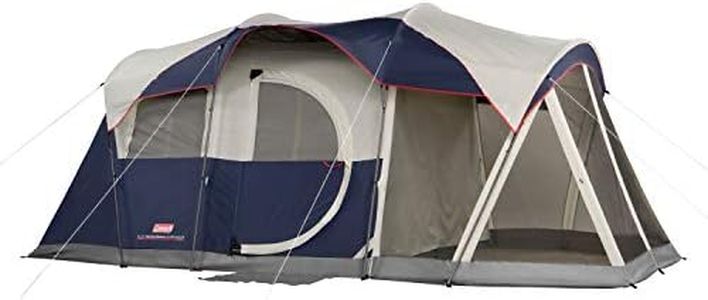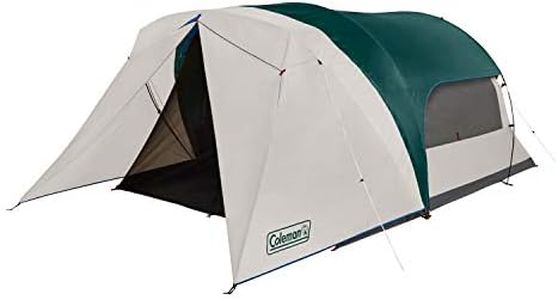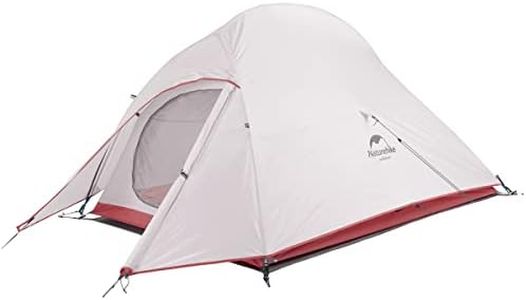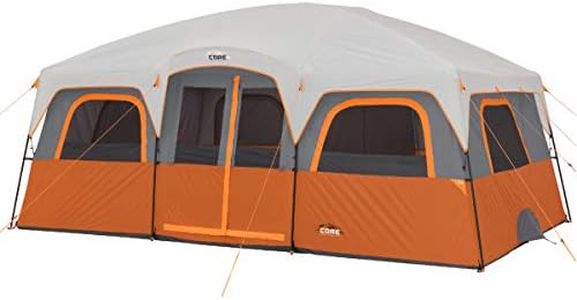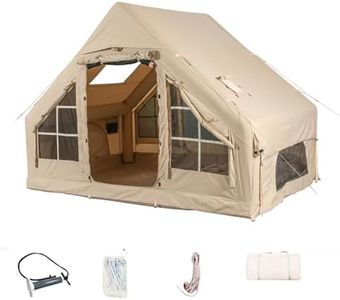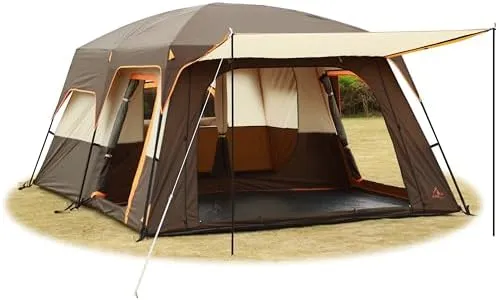We Use CookiesWe use cookies to enhance the security, performance,
functionality and for analytical and promotional activities. By continuing to browse this site you
are agreeing to our privacy policy
10 Best Cabin Tents
From leading brands and best sellers available on the web.Buying Guide for the Best Cabin Tents
Choosing the right cabin tent can make a huge difference in your camping experience. Cabin tents are popular for their vertical walls and spacious interiors, making them ideal for family trips or group outings. Whether you’re a first-timer or a seasoned camper, it's important to focus on features that match your camping style, group size, and comfort needs. Start by visualizing where and how you'll use the tent, then prioritize features that match those situations. Always think about ease of setup, protection from weather, and how much space and convenience you really want on your trip.CapacityCapacity tells you how many people can sleep in the tent, but it's based on a snug fit—adults lying side by side with little extra room. If you prefer more personal space or need room for gear, consider sizing up. For instance, a 6-person tent is comfortable for 4 people with gear. Small tents (4-6 people) are lighter and cozy, better for fewer campers or short trips. Larger tents (8+ people) offer extra space and comfort for families or groups, but they’re bulkier. Think about your group, and if you like some elbow room, opt for a size above the listed capacity.
Peak HeightPeak height is the tallest point inside the tent, often right in the center. A higher peak lets most adults stand up straight, which can be a big plus when changing clothes or setting up beds. Lower peak heights save weight and handle wind better but feel less roomy. Tents with a peak height over 6 feet feel airy and comfortable for standing and moving around, while those under 5 feet may only allow sitting or crouching. If comfort and upright movement are important to you, go for a higher peak.
Season RatingSeason rating shows what weather and temperature the tent is built for. Most cabin tents are 3-season tents, meaning they’re good for spring, summer, and fall, handling rain and light wind, but not heavy snow or very cold conditions. Some heavier 4-season tents exist, but they’re less common. If you’ll only camp in moderate weather, a 3-season rating is right. For trips where you might face cooler or unpredictable weather, look for extra weatherproofing.
Ease of SetupThis refers to how quickly and simply you can get your tent up and ready. Cabin tents can be bulky, but many come with features like color-coded poles or instant-pitch frames. Some can be set up in under 10 minutes, while others might take 20 or more. If you’re camping alone or want less hassle after a long drive, look for user-friendly designs or instant setup systems. For group trips with extra hands, traditional setups might not be a problem.
Weather ProtectionThis includes features like rainfly coverage, water-resistant fabric, sturdy zippers, and sealed seams, all protecting you from rain and wind. A full-coverage rainfly and bathtub-style floor (the edges run up the sides) keep you dry in heavy rain, while vents and windows help with airflow and condensation. If you’ll be camping somewhere rainy or unpredictable, prioritize robust weatherproofing; if fair-weather camping, simpler designs may suffice.
VentilationVentilation means how well the tent lets out moisture and lets in fresh air. Good ventilation prevents stuffiness and condensation, making nights more comfortable. Features like mesh windows, roof vents, and multiple doors improve airflow. In hot or humid climates, more mesh and vents are crucial to keep you cool, while for chilly trips you may want fewer openings to conserve warmth. Think about your usual camping climate when considering this.
Weight and Packed SizeCabin tents are bigger, so they’re heavier and bulkier than hiking tents. Weight and packed size matter most when you’re carrying the tent any distance or have limited car space. Smaller tents are easier to transport, while larger tents often require two people or a dolly. If you’ll be driving right up to your campsite, weight may be less critical, but for walk-in sites or limited storage, look for more compact models.
Room Dividers and Interior FeaturesCabin tents sometimes include removable room dividers, gear lofts, and plenty of pockets, making it easy to organize your space and create privacy. Dividers are handy for families or groups wanting personal space. Loft storage and gear pockets help keep things tidy. If you value privacy, want separate sleeping areas, or just want to keep gear off the floor, look for tents with these features.

